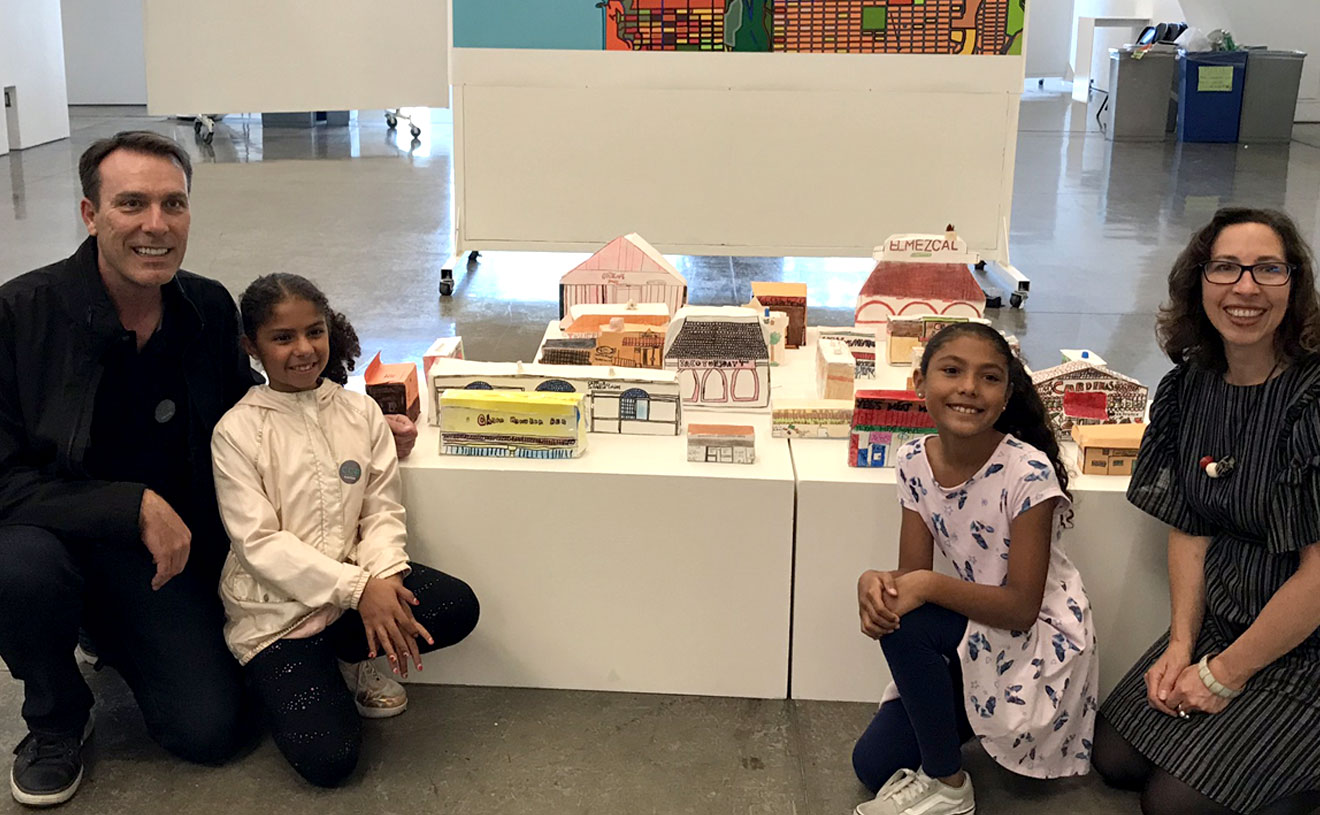
Hayward students participate in professional architecture festival
Latinos in Architecture is a professional group that exhibits the work of Latino architects as part of San Francisco’s Architecture and the City festival. A group of students from Schafer Park Elementary School in Hayward were the only elementary school students invited to participate and exhibit their unique designs at this year’s festival.
The students attended an opening reception for the festival on September 19 at California College of the Arts in San Francisco.
This year’s theme, “We the City,” presented the students’ scale models of businesses serving the local immigrant community. The project also includes the students’ personal narratives about the businesses.
The Hayward students were invited last year to display their work alongside architects and architecture students. Based on the positive response to the students’ work, the class was again asked to participate this year. The class is focusing on everyday architecture in suburban immigrant communities (in this case, Hayward). Students built a scale model of a business serving the local immigrant community (using Google Street View), and wrote a personal narrative about the place they chose.
Vision Hispana asked the students about their experience and what they learned. Their responses follow.
What are the lessons you learned from the project?
“You can reuse things that are thrown away. For example, we used milk cartons to build our models.” (Lucia Wright)
“We learned how to build scale models. Our scale was 1 milk carton = 1 story, which is about 3 inches = 10 feet.” (Claudia Maldonado)
“There are many different immigrant businesses from many different cultures in the Bay Area.” (Carlos Martínez)
“We learned how to use scale in model-building projects.” (Javier Covarrubias)
“We learned that just because you can’t do something the first time, you shouldn’t give up. Lots of students had problems getting the walls to stand up on their models. They kept trying different ways until they got it.” (Estrella Ochoa)
“If you like designing buildings you can become an architect when you grow up.” (Zoe Orquiz)
“It is better to work together than alone. Sometimes it was hard to glue the models, but my friends Mya and Andrea helped me.” (Geena Gallegos)
“We learned that it can be useful to reuse materials instead of throwing them away. For example, milk cartons are useful for walls in our models.” (Stephanie Villamil)
“We learned that it takes a while to make a high-quality project.” (Ariana Garcia)
“We learned about Japanese poetry called Haiku and we got to write our own Haiku.” (Lucia Wright)
“We wrote a personal narrative about something that happened to us at the immigrant business we chose.” (Geena Gallegos)
What was your favorite part of the project?
“When we illustrated our Haiku and personal narratives.” (Mya Ayers)
“My favorite part of the project was drawing the business.” (Yessica Duran)
“My favorite part of making the model was adding the details like the roof, windows and doors.” (Gonzalo Cervantes)
“Going to College of the Arts in San Francisco. I was able to share my narrative, Haiku and model with everybody who came to the exhibit! I also like it when I was helping my classmates with their writing.” (Geena Gallegos)
“My favorite part was when we got to write about what actually happened in the business we chose.” (Lucia Wright)
“My favorite part of the project was the sense of accomplishment when I saw everything I had done.” (Claudia Maldonado)
“My favorite part of the project was when I typed and printed my writing. I felt like I was a professional.” (Sergio Berumen)
The students’ teacher, John Martoni, has an urban planning background and has brought urban design/architecture into his classroom by integrating it with reading, writing, math, science and social studies. He also published a curriculum called METROPOLIS: A Green City of your Own, which is used by museums, non-profits and schools across the country interested in teaching kids about architecture and urban planning. A few years ago, the curriculum was one of the finalists to represent the United States in an international competition called "Golden Cubes" and was recognized with an award at the opening of the Association of Architecture Organizations national conference for engaging youth in planning and contributions to increase diversity in architecture.

